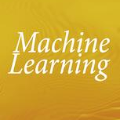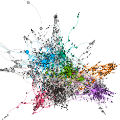【论文】图上的表示学习综述
转自:the2
论文《Representation Learning on Graphs: Methods and Applications》摘要:
Machine learning on graphs is an important and ubiquitous task with applications ranging from drug design to friendship recommendation in social networks. The primary challenge in this domain is finding a way to represent, or encode, graph structure so that it can be easily exploited by machine learning models. Traditionally, machine learning approaches relied on user-defined heuristics to extract features encoding structural information about a graph (e.g., degree statistics or kernel functions). However, recent years have seen a surge in approaches that automatically learn to encode graph structure into low-dimensional embeddings, using techniques based on deep learning and nonlinear dimensionality reduction. Here we provide a conceptual review of key advancements in this area of representation learning on graphs, including matrix factorization-based methods, random-walk based algorithms, and graph convolutional networks. We review methods to embed individual nodes as well as approaches to embed entire (sub)graphs. In doing so, we develop a unified framework to describe these recent approaches, and we highlight a number of important applications and directions for future work.
链接:
https://arxiv.org/abs/1709.05584
原文链接:
https://m.weibo.cn/2536116592/4155504433859376





